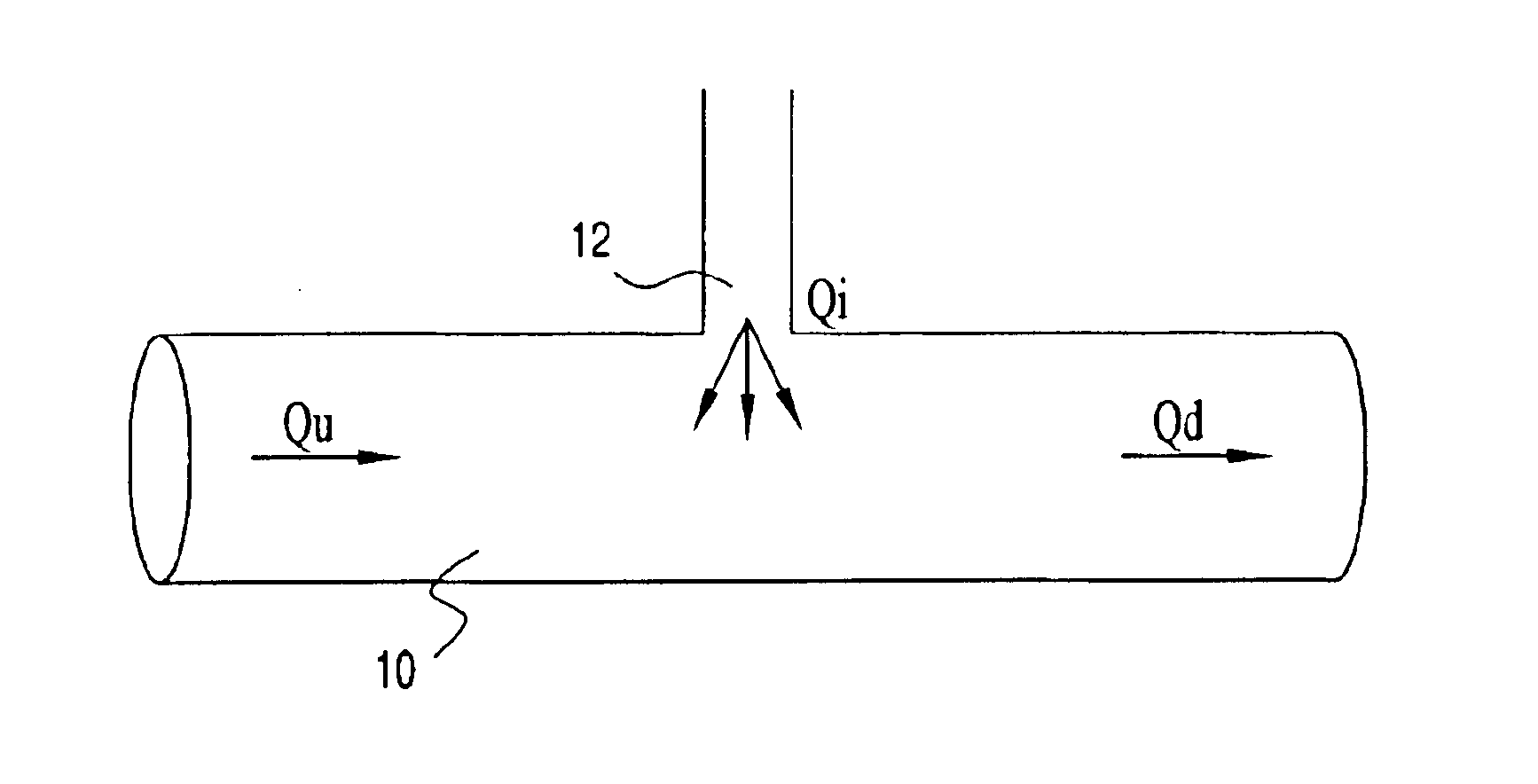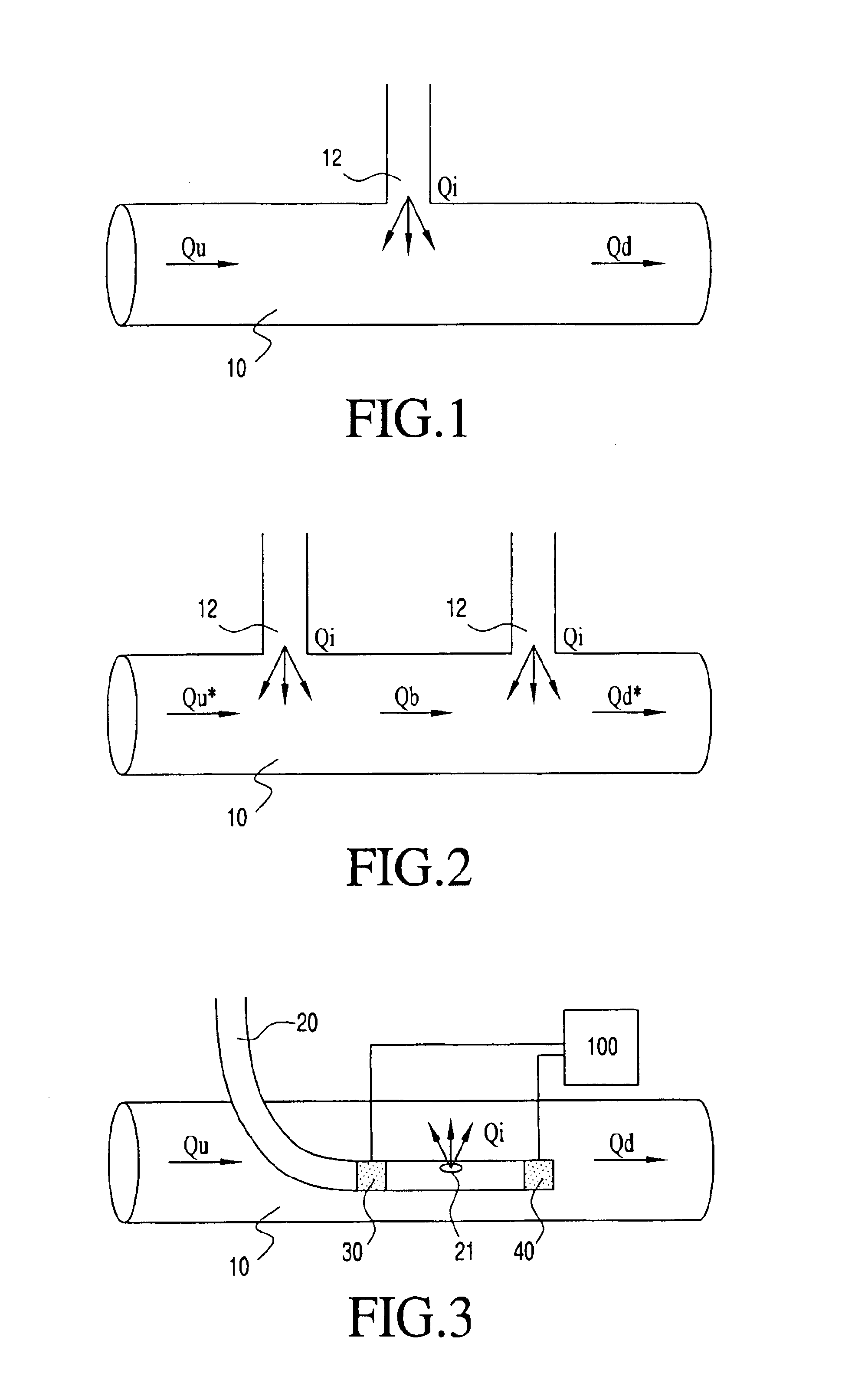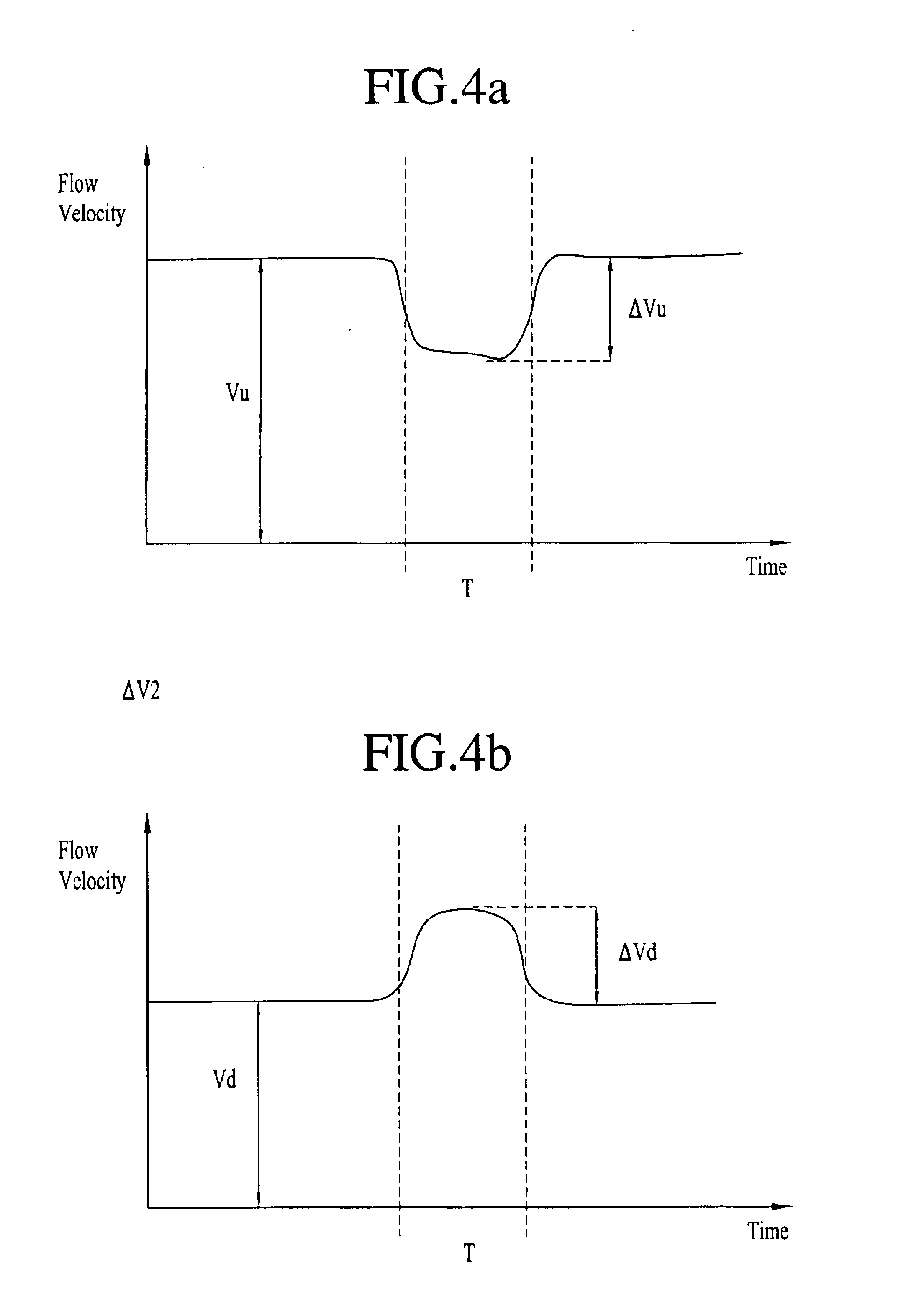Method and apparatus to measure blood flow by an introduced volume change
- Summary
- Abstract
- Description
- Claims
- Application Information
AI Technical Summary
Benefits of technology
Problems solved by technology
Method used
Image
Examples
embodiment 1 (
Two Sensor Catheter to Measure Velocity with Single Injection)
As shown in FIG. 3, in the first embodiment, the catheter 20 with two sensors 30, 40 is employed to measure a velocity of blood (such as in m / sec) using a single volume change introduction through the port 21. The sensors 30, 40 may be any type of sensor as previously disclosed. In a preferred construction, the sensors 30, 40 are connected to the catheter 20 to be located within the conduit 10.
The catheter 20 is inserted into the conduit 10 as shown in FIG. 3. The two sensors 30, 40 measure blood velocity, or a parameter that corresponds to flow velocity at their respective locations in the conduit 10. The first sensor 30 measures a parameter Vu, the second sensor 40 measures a parameter Vd, each corresponding to flow velocity at its local respective site. Because flow velocity corresponds to volume flow, an equation analogous to Eq. 5 is: Q=Qi(Δ VdVd-Δ VuVu)(Eq. 20)where ΔVu and ΔVd are changes corresponding to upst...
embodiment 2 (
Velocity Sensors Outside the Vessel with Single Injection)
Referring to FIG. 5, in the second embodiment, flow (blood) velocity sensors 30, 40 are located outside the conduit 10 and a single volume change introduction is made through port 21 in the catheter 20 which is located in the conduit. This embodiment is analogous to Embodiment 1 (Eq. 5 and Eq. 20) but sensors 30, 40 are located outside of the conduit 10. Also shown in FIG. 5 are alternative locations for sensors 30′, 40′ on the skin of the patient, or 30″,40″ spaced from the patient.
Referring to FIG. 6, the upstream sensor 30 and the downstream sensor 40 may be adjacent each other and generally aligned along the relevant flow at the injection site 21, wherein each sensor defines a sensing zone such that an upstream sensor 30 sensing zone 33 extends upstream of the injection site and a downstream sensor 40 sensing zone 43 extends downstream of the injection site. In a further configuration shown in FIG. 7, a single sensor 35 m...
embodiment 3
d Velocity Sensor Catheter with Two Injections)
As shown in FIG. 8, the third embodiment employs the catheter 22 having a single flow sensor 50, such as a blood velocity sensor, located intermediate two volume change site ports, an upstream port 51 and a downstream port 53, through which introductions are made into the flow in the conduit 10 through the catheter.
The catheter 22 is inserted into the conduit 10 (FIG. 8). In this embodiment, flow may be measured by making two volume change introductions. One volume change is made upstream through the upstream port 51, the other volume change is made downstream of the single sensor 50 (blood velocity sensor) through the downstream port 53. The equation is analogous to Eq. 19. Q=Qi[Δ VdV-Δ VuV)(Eq. 21)
In this equation, V is blood velocity at the location of the single sensor 50; ΔVd and ΔVu the changes in blood velocity from a volume change introduction downstream of the sensor and upstream of the sensor respectively. (FIG. 9).
The in...
PUM
 Login to View More
Login to View More Abstract
Description
Claims
Application Information
 Login to View More
Login to View More - R&D
- Intellectual Property
- Life Sciences
- Materials
- Tech Scout
- Unparalleled Data Quality
- Higher Quality Content
- 60% Fewer Hallucinations
Browse by: Latest US Patents, China's latest patents, Technical Efficacy Thesaurus, Application Domain, Technology Topic, Popular Technical Reports.
© 2025 PatSnap. All rights reserved.Legal|Privacy policy|Modern Slavery Act Transparency Statement|Sitemap|About US| Contact US: help@patsnap.com



